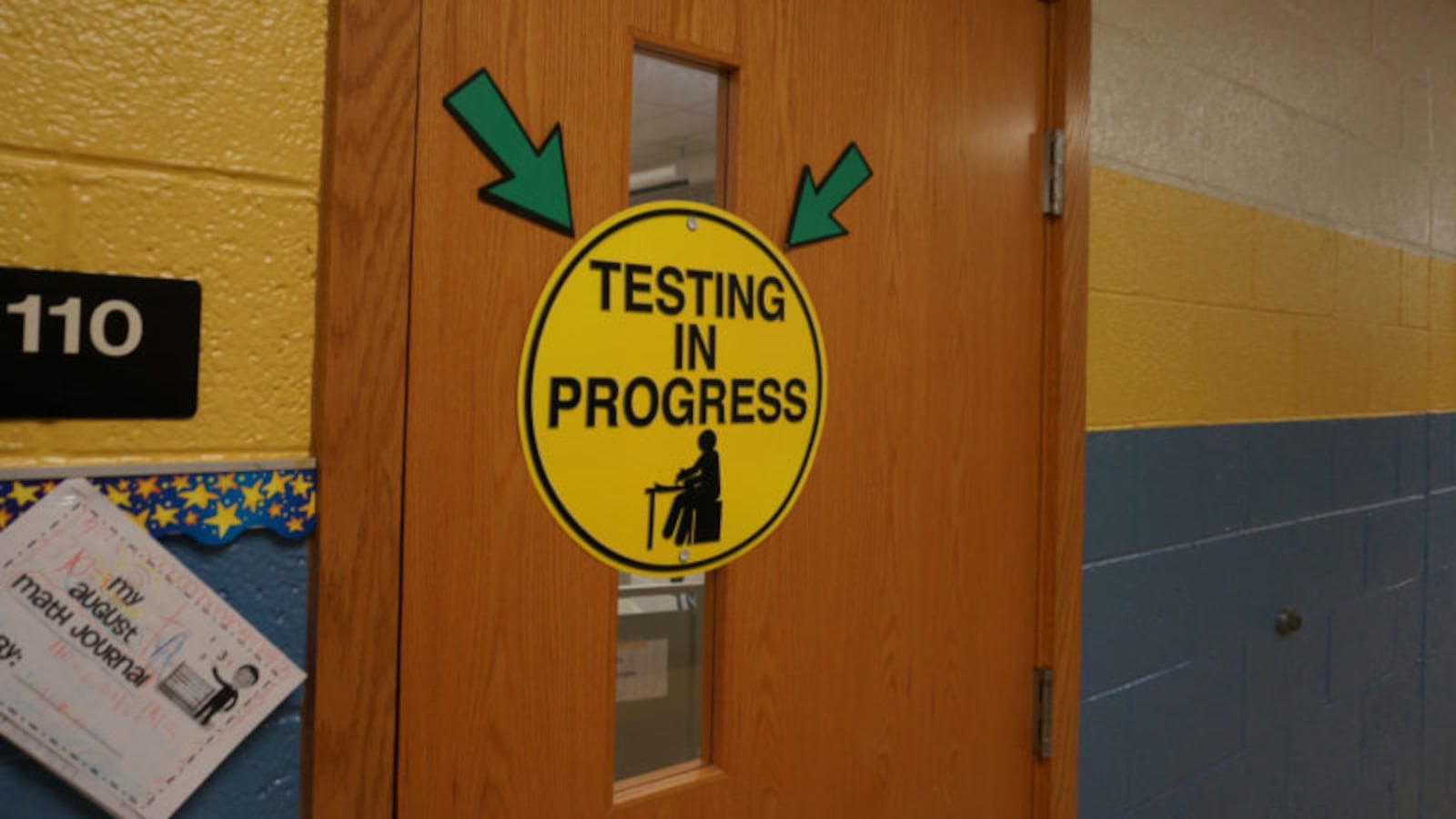Chicago released results Tuesday for a national test called NWEA MAP, which city students take each year. Overall, elementary test scores are up over time but flat in recent years.
The city’s multiyear trend offers the school system bragging rights. But the scores matter more for individual campuses and students.
Administrators monitor the scores closely, since an elementary school’s NWEA scores determine more than half of its quality rating. The district’s top-rated schools generally have stronger scores. See how the district fared overall here.
Besides contributing to schools’ quality ratings, families of eighth-graders tend also to pay attention to NWEA scores since individual student scores are a factor in applications to selective-enrollment high schools and other competitive programs.
NWEA scores are also a determining factor in a new gifted policy that debuted earlier this year that allows students who clear certain scores to skip grades.
Use the tool below to search for your school and compare it to up to six others. The “national average performance” percentiles reflect the percentage of students who score at or above the national average for their grade level on the NWEA exam. The “national school growth” percentile — labeled below as growth — offers a comparison of how far a school’s students advanced compared to students on average across the country who started at the same level. A score above 50 signals that a school’s growth is outpacing the national average; lower, and it’s falling behind.
Together, achievement and growth results from tests play a major role in school and district quality ratings.
Some students with disabilities take an alternative assessment and their scores are not reflected in districtwide tabulations. The same is true of some English Language Learners who score below a threshold language proficiency score on a separate test known as the Access.
To learn more about districtwide trends in achievement, read our joint report here with WBEZ.

